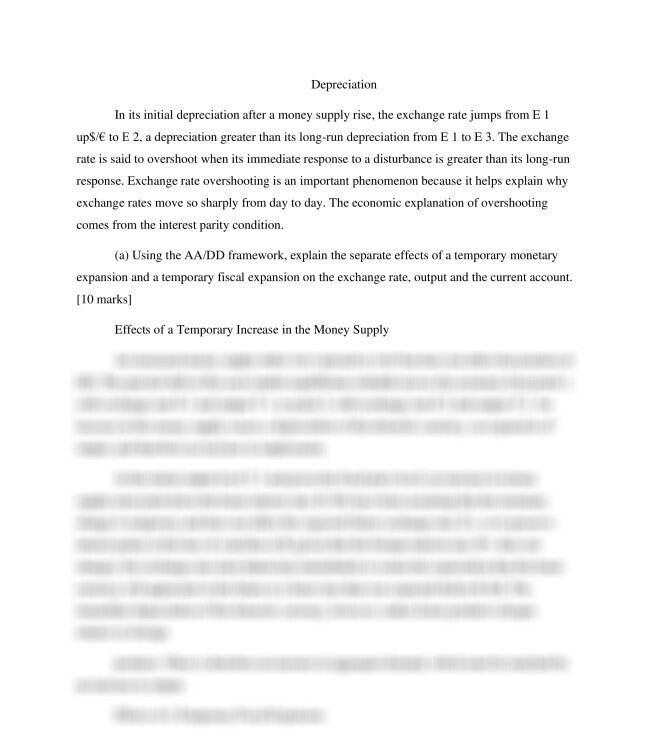Depreciation In its initial depreciation after a money supply rise, the exchange ratejumps from E 1 up$/€ to E 2, a depreciation greater than its long-rundepreciation from E 1 to E 3. The exchange rat
Depreciation In its initial depreciation after a money supply rise, the exchange ratejumps from E 1 up$/€ to E 2, a depreciation greater than its long-rundepreciation from E 1 to E 3. The exchange rat
$ $/€ $15 (Given (Point (a (a) (b) (given (point (that /P 1 1) 1, 1. 15-12a 1oe) 2 2) 2). 2, 2. 2oe, 3 3, 3. 4) 4). A AA/DD AA1 AA2 AA2. Account Affect An Analyse As At Because But Consider Current DD DD. Depreciation Dollar/Euro E E. E2 Ee Ee, Effect Effects European Europe’s Euros). Euros. Exchange Expansion Figure Fiscal Foreign G Given How In Increase Initially Long-Run M Macroeconomic Monetary Money Ms Output, P Permanent Point Policies Question R R*, R, R. R1 R2 Rate Real R€ Short-Run Similarly, Since Supply Suppose Temporary The There Therefore, This U.S. US Using We When Without XX, Y Y) [10 a above accompanies account account. action action. additional adjustment affect affects after again against aggregate all also an and answer appreciate appreciated appreciates appreciation appreciation. are as asset assuming at balance be because been before before, begins behave billion both but by can case, cause caused causes causing change change), change, changed, cheaper comes condition. create currency currency, currency. current cut day day. decides decline demand demand, deposits deposits. deposits; depreciate depreciates depreciating depreciation depreciation) deterioration develop differ difference direct disturb disturbance does dollar dollar/euro domestic down downward downward-sloping due during e, earlier, economic economy economy’s effect effects employment. enough equal equal, equilibrium equilibrium, equilibrium. euro euro, eventually examined. example, exchange expand expanding expansion expansion. expansionary expect expectation expectations expectations. expected expensive explain explanation f. face fall faster favor fell. figure. final fiscal fixed for foreign framework, from future given goods government greater has have helps higher holdings. home however, if immediate immediately impact important improved in including income increase increase. increased increases? initial initially interest international intersect, is is, it its jumps just large lead left level level, lies like linking long long- long-run lowering lowers macroeconomic makes making market markets marks] matched might monetary money more move moves moving must new next nominal not now of offset on one-time only original output output, output. out” overshoot overshooting parity part people permanence permanent permanent, phenomenon point policies policy policy’s position preserve price prices, products products. proportional proportionally. purchases push pushes raises rate rate, rate. rates rather reaching real reduces relative remains respond response response. restored result resulting return returned right right. rise rise). rise, rises rises, run run, run. s.) said schedule schedule, schedules see separate services sharply shift shifts short short-run shown shows shuttle. similar smaller so space spend spending subsequent supply supply$/€ supply, supply. taxes. temporary temporary. temporary? than that the them there therefore these they this through thus to to$/€ top transactions transitory, ultimately unchanged up$/€ upward upward. was way were when where which while why will with would your “crowds
In its initial depreciation after a money supply rise, the exchange rate
jumps from E 1 up$/€ to E 2, a depreciation greater than its long-run
depreciation from E 1 to E 3. The exchange rate is said to overshoot when its
immediate response to a disturbance is greater than its long-run response.
Exchange rate overshooting is an important phenomenon because it helps explain
why exchange rates move so sharply from day to day. The economic explanation of
overshooting
